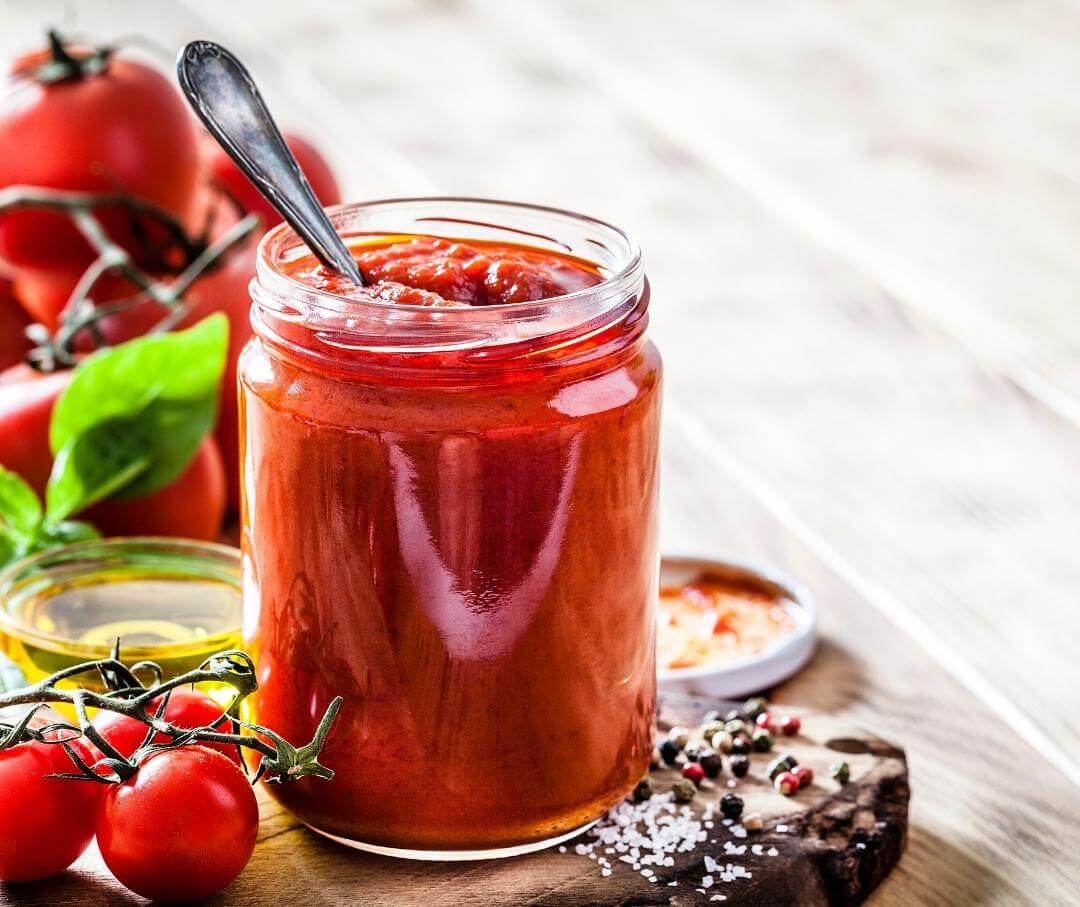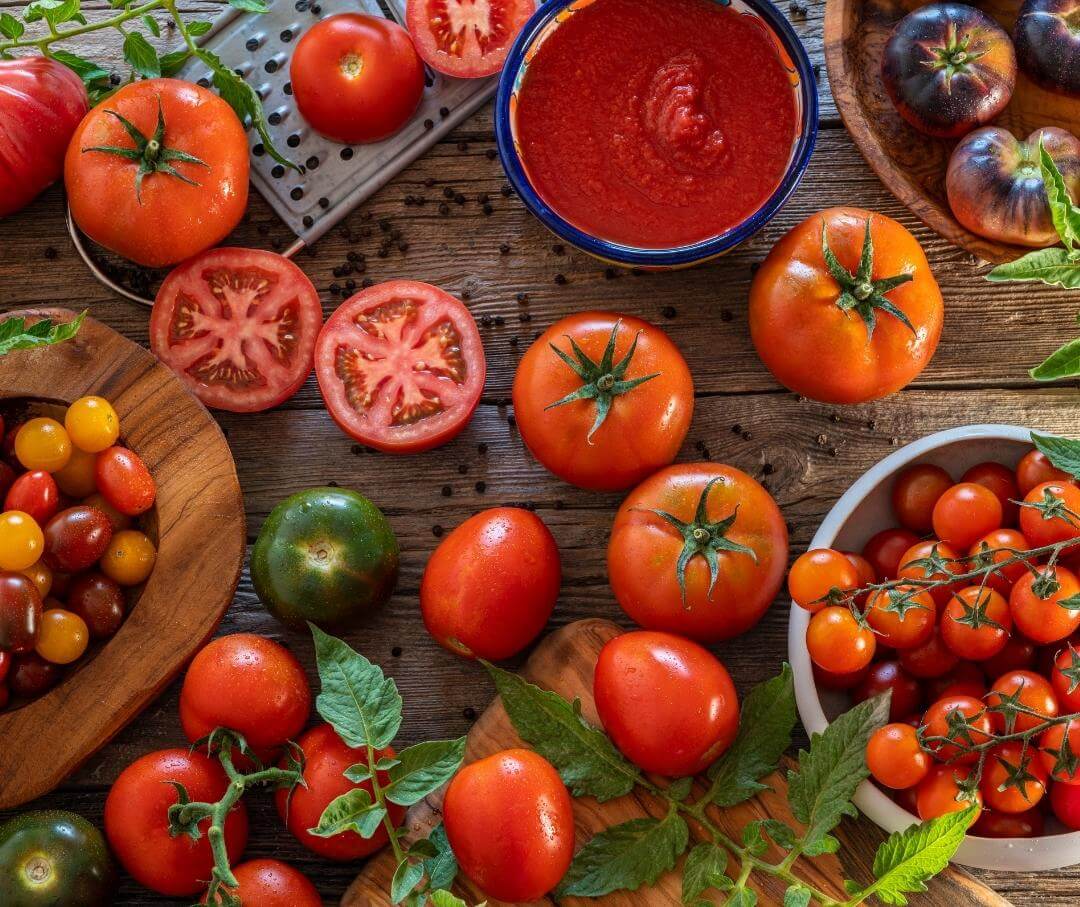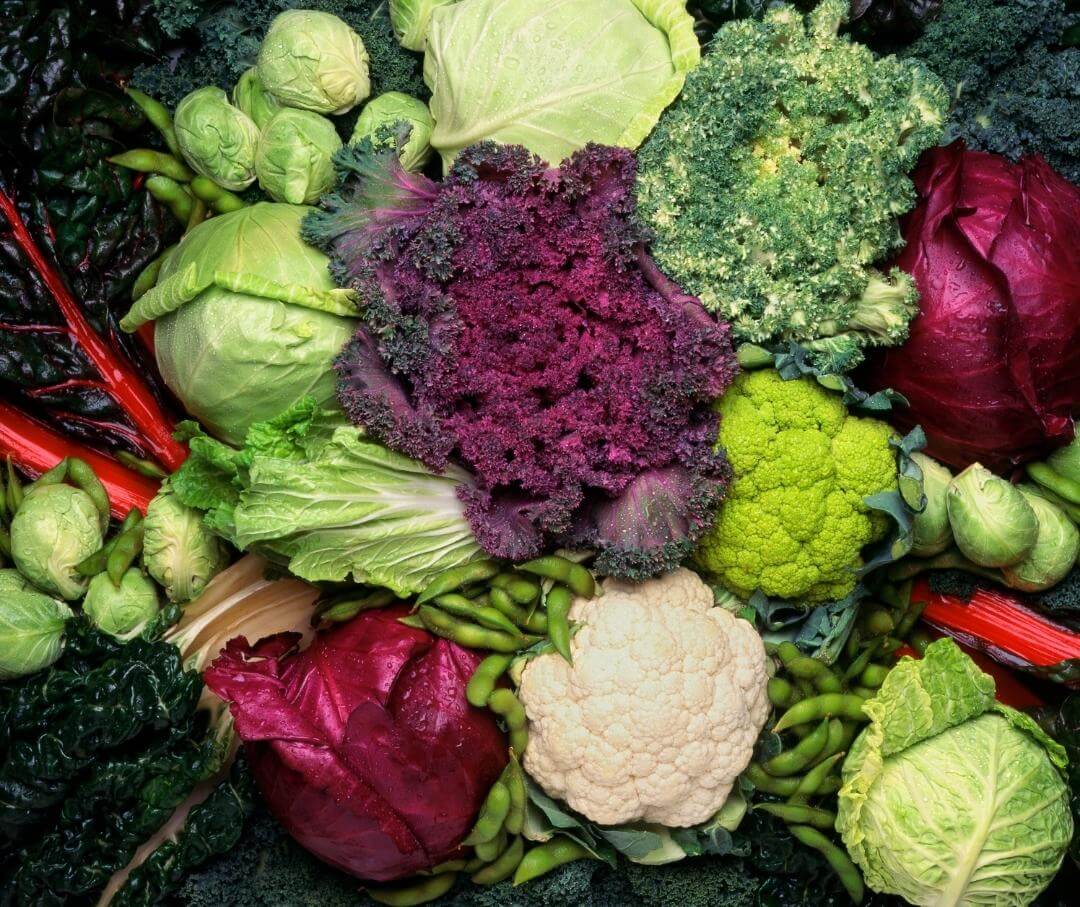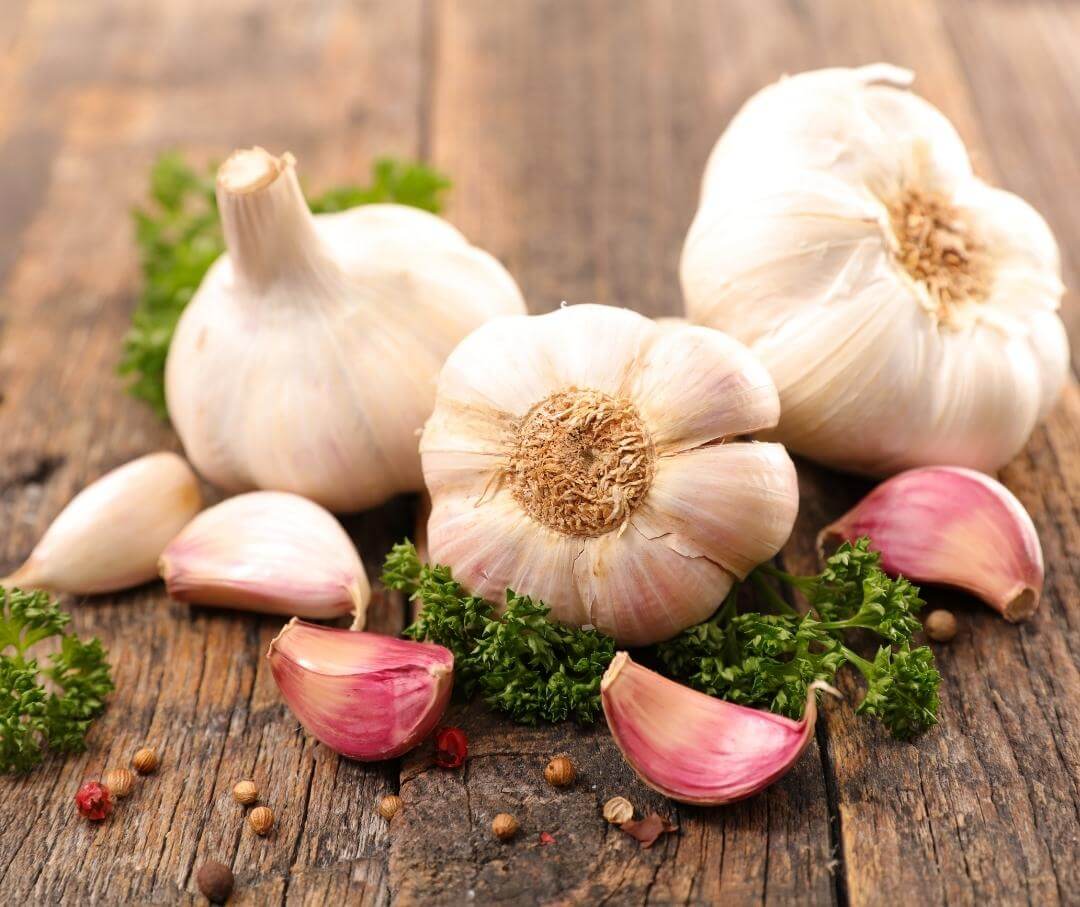All fresh tomatoes are low in sugars and because they fall low on the glycemic index, don’t usually have a significant impact on blood sugar levels. In fact, they are actually high in potassium and lycopene, which can help improve blood sugar.
Keep reading to find out why these nutrients are important for your health, and how you can incorporate both fresh and canned tomatoes into your daily diet.
{{mid-cta}}
Glycemic Index of Tomatoes
Fresh tomatoes have a glycemic index (GI) score of 15, which is considered very low. Unlike some other grains or starchy vegetables, this score means they have little effect on your blood sugar levels.
The glycemic index (GI) measures how quickly a food raises blood sugar levels. Low-GI foods are digested and absorbed slowly, causing a gradual rise in blood sugar levels. High-GI foods are digested and absorbed quickly, causing a blood sugar spike. People with type 2 diabetes or blood sugar dysregulation may choose to eat low-GI foods to help maintain stable blood sugar levels.
Tomatoes also have a low glycemic load (GL), which considers both the GI and the portion size of a food.
Do All Tomatoes Have the Same GI?
There are hundreds of different varieties of tomatoes. The most popular ones you may recognize include:
- Roma
- Heirloom
- Beefsteak
- Cherry
- Grape
Different types of tomatoes lend themselves to different preparations and uses. Because of their size, cherry and grape tomatoes are better suited for salads or an easy snack. Beefsteak and heirloom tomatoes are larger and a bit sturdier, so they can hold up on a sandwich. Roma tomatoes are naturally sweeter and are best used for canning or sauces.
The USDA nutrient database lists similar carb content for equal grams of raw or fresh tomato varieties and a similar GI score across the board. So whether you are using your fresh tomatoes in a salad or turning them into a sauce, know your blood sugars should remain stable.
Will Fresh Tomatoes Raise Your Blood Sugar?
Fresh tomatoes are unlikely to raise your blood sugar. A low GI score indicates that the food will slowly digest in your system and have a delayed effect on your blood sugar levels.
Tomatoes are not a high-fiber food, offering approximately 1 to 2 grams of fiber per 100-gram serving. Pairing tomatoes with other vegetables, like dark leafy greens or avocado, can help increase your total fiber intake during your meals, which plays a key role in slowing down your glucose metabolism and absorption.
Will Canned Tomatoes Impact Blood Sugar Levels?
Canned tomatoes are still low in starch and will also have a low GI score. This means they should not impact your blood sugar levels, either.
Sometimes canned tomatoes are prepared with herbs and spices. Commonly used canned tomato-based products, like sauces, have large amounts of added sugars. Sugars are used to balance the acidity of tomatoes, making them sweeter. If you see sugar on the ingredient list, put the can down and look for a sugar-free option. Added sugars are more likely to raise blood sugar levels.
Always try to buy unflavored or unsalted canned veggies whenever possible.
Glycemic Index of Tomato-Based Foods
Fresh tomatoes are a key ingredient for other foods. Here is a list of popular tomato-based products and their GI score:
- Tomato sauce (Marinara): 23
- Unsweetened tomato juice: 38
- Canned tomato soup: 38
Tomato paste and condiments like ketchup do not have assigned GI scores. They are usually referred to as miscellaneous sauces that enhance the flavor of foods instead of being a full meal.
An entire bottle of ketchup can have high sugar content (again, check your labels!). But if you monitor your portion sizes, you would only be consuming 3g of sugar per tablespoon. You can control how much sauce you add to your meals and monitor your sugar intake.
Nutrients in Tomatoes

Tomatoes are low in carbohydrates and consist mostly of water. They are high in nutritional value and contain essential nutrients, including:
- Vitamin C: Supports immune function and promotes protein synthesis. Both of these mechanisms reduce your risk of disease.
- Potassium: Helps to regulate cardiac function and can help lower blood pressure. People with lower blood levels of potassium may be at a higher risk for type 2 diabetes.
- Folate: Supports red blood cell formation and the growth and development of cells in your body (especially critical during pregnancy). Folate is also an essential nutrient for regulating inflammation.
- Lycopene: An antioxidant that gives tomatoes their red color, lycopene is a non-pro vitamin A carotenoid (which means it doesn’t convert to vitamin A), with a lot of research supporting its role in reducing the risk of chronic diseases like type 2 diabetes, cancer, obesity, heart disease, and more.
A 2019 study tested the potential weight loss benefits of lycopene supplements on obese mice. The results indicated a positive correlation between lycopene supplements and observed weight loss. While human trials need to be completed, it is a promising area of research.
Roma and cherry tomatoes appear to contain the most lycopene for raw options, while tomato paste contains the most for processed tomato products.
Unflavored canned tomatoes and tomato juice products all carry similar nutrient profiles. The most significant difference between products is the fiber content. Tomato juice has much lower fiber compared to canned and fresh tomatoes.
Can Tomatoes Reduce Insulin Resistance?
Your pancreas produces a hormone called insulin, which is responsible for clearing sugar out of your bloodstream.
Insulin resistance means your insulin hormone can no longer efficiently regulate blood glucose levels, resulting in high blood sugar.
Researchers have been studying the link between tomatoes and blood sugar improvements in people with diabetes since the 1990s. Scientists have found bioactive compounds in fresh and cooked tomatoes that reduce oxidative stress related to diabetes.
Oxidative stress is when the free radicals in your body outnumber the antioxidants. Free radicals are harmful to your health, and an abundance of these molecules increases the risk of developing different diseases.
Although the data is promising, no studies exist yet on the link between tomatoes and blood sugar control in people without diabetes.
Potassium and Insulin Secretion
Some observational studies have demonstrated that lower potassium levels may increase your risk of diabetes. This is because potassium channels affect pancreatic beta cells, which are involved with insulin production and secretion.
Your body regulates blood potassium levels through biochemical signaling, but the resources must be replenished. To satisfy your potassium requirements, you should eat potassium-rich foods, such as fresh or cooked tomatoes.
Other Health Benefits of Tomatoes
Phytochemicals are natural chemical compounds found in different plant-based foods, including tomatoes. It’s speculated that phytochemicals can decrease your risk of developing certain types of cancer.
In 2021, a large-scale meta-analysis reviewed all high-quality studies investigating any link between phytochemical intake and colon cancer incidence.
The data showed a positive link that people who ate a diet rich in phytochemicals had a decreased incidence of colon cancer compared to people who consumed fewer phytochemical-rich foods.
<p class="pro-tip"><strong>Also Read: </strong> <a href="/blog/cheese-metabolic-health">Is Cheese Good or Bad for Metabolic Health</a>.</p>
How to Add More Tomatoes to a Healthy Diet

Tomatoes are versatile and can be eaten independently or mixed into your favorite dishes. Pair them with protein-rich or fiber-rich foods to delay digestion and minimize any impact on your blood sugar. Try these tomato-forward dishes:
- Tomato slices on a grilled cheese sandwich made with whole grain bread.
- Sautée tomatoes and spinach into your breakfast omelet.
- Tomato salad with three different varieties and colors, and add legumes for protein.
- Stock your pantry with canned (no sugar added) tomatoes.
- Add canned tomatoes and tomato paste to your next soup or chili dish.
- Swap out fruit juice for unflavored tomato juice.
As you explore adding more tomatoes to your cooking, consider choosing specific varieties for your dishes.
Try This Famous Tomato Salad
A famous tomato salad that aligns with the Mediterranean diet is the Caprese salad. It has simple instructions and is blood-sugar friendly:
- Cut 1-2 ripe tomatoes into slices
- Cut 8oz fresh mozzarella into ¼” slices
- A handful of fresh basil leaves
- 2 tablespoons each of olive oil and balsamic glaze to dress the salad
Layer your ingredients in a repeating pattern: tomato, mozzarella, and basil. Repeat the pattern until you have used all your ingredients. Drizzle olive oil and balsamic glaze over your salad. You can add a pinch of salt and fresh ground pepper if you want.
Are There Downsides of Eating Tomatoes?
People who suffer from acid reflux or who are recovering from an ulcer may be advised to limit their intake of tomato products by healthcare practitioners. The high ascorbic acid in tomatoes can aggravate symptoms and worsen feelings of heartburn.
This recommendation includes all tomato products, including tomato sauces, salsas, and tomato juice drinks.
Can You Eat Too Many Tomatoes?
There is no scientific literature to suggest how many tomatoes are safe to eat in a day. You should listen to how your body responds to tomatoes and make a decision that feels right for you.
Are Green Tomatoes Safe to Eat?
There are two circumstances when you would encounter a green tomato: the first is an unripe red tomato, and the second would be a variety of tomatoes that grows green with stripes.
Both of these are safe to eat, but the unripened tomato will lack flavor and nutrients.
A true green tomato has a tart flavor that offers more crunch than a regular red tomato. Green tomatoes are normally cooked before eating and used in salsa or are breaded and fried.
While fried tomatoes are delicious, they are also higher in fats and carbs. You can try making them in the air fryer or grilling them instead.
Tomatoes and Blood Sugar: Key Takeaways
Tomatoes are nutritious and loaded with essential vitamins and antioxidants. They are low-carb and can promote a healthy weight as part of a balanced diet.
You can rely on fresh tomatoes or canned options in your diet. Choose unflavored canned options whenever possible, and always read the ingredients before buying.
If you suffer from acid reflux, you should wean back on tomatoes until your symptoms subside. Alternatively, you can meet with a registered dietitian nutritionist (RDN) to help you find the best foods for your body.
<p class="pro-tip"><strong>Keep Reading: </strong> <a href="/blog/low-gi-fruits">The Best Low-Glycemic Fruits</a>.</p>
- Item 1
- Item 2
- item 3
Topics discussed in this article:
References
- US Department of Agriculture. (n.d.). FoodData Central. Tomato, Raw. Retrieved August 2022, from https://fdc.nal.usda.gov/fdc-app.html#/?query=tomato
- GI Group, Barclay, A., & Barclay, A. (2022, June 30). Glycemic Index – Glycemic Index Research and GI News. GI Research. Retrieved August 2022, from https://glycemicindex.com/
- McLean, R. M., & Wang, N. X. (2021). Potassium. Advances in food and nutrition research, 96, 89–121. https://doi.org/10.1016/bs.afnr.2021.02.013
- Granger, M., & Eck, P. (2018). Dietary Vitamin C in Human Health. Advances in food and nutrition research, 83, 281–310. https://doi.org/10.1016/bs.afnr.2017.11.006
- Wang, J., Suo, Y., Zhang, J., Zou, Q., Tan, X., Yuan, T., Liu, Z., & Liu, X. (2019). Lycopene supplementation attenuates western diet-induced body weight gain through increasing the expressions of thermogenic/mitochondrial functional genes and improving insulin resistance in the adipose tissue of obese mice. The Journal of nutritional biochemistry, 69, 63–72. https://doi.org/10.1016/j.jnutbio.2019.03.008
- US Department of Agriculture. (2019, April). FoodData Central. Tomato Juice. Retrieved August 2022, from https://fdc.nal.usda.gov/fdc-app.html#/food-details/170545/nutrients








.jpg)























